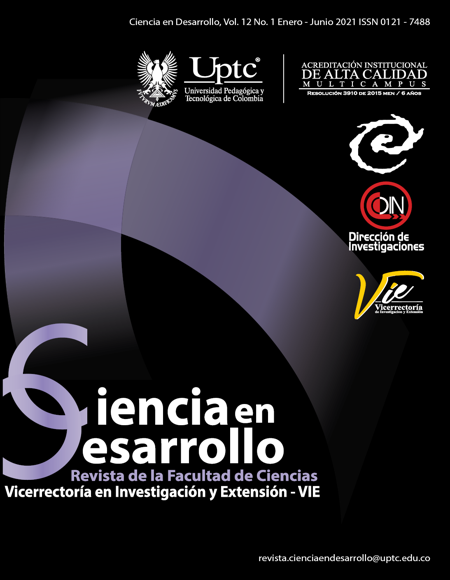Glycerol oxidation by fluorinated and platinized Titania

Abstract
In this work, fluorinated and platinized TiO2 was evaluated in the glycerol oxidation. Fluorination led to increase the specific surface area of titania, and platinization treatment led to obtain the highest absorption in the visible region of the electromagnetic spectrum; thus, 0.5 wt.% Pt-F-TiO2 was the best catalyst in the obtention of highest yield and selectivity to glyceraldehyde (GAL). It was also found that 2wt.% of Pt content had a detrimental effect in the glycerol conversion. Fluorination and platinum addition led to modify the reaction mechanism and selectivity.
Keywords
Glicerol, 0.5wt.% Pt-F-TiO2, 2wt.% Pt-F-TiO2, Glyceraldehyde, Dihydroxyacetone.
References
[1] M. Rossi, C. Della-Pina, M. Pagliaro, R. Ciriminna, P. Forni, “Greening the Construction Industry: Enhancing the Performance of Cements by Adding Bioglycerol”, Chem Sus Chem., 1, p. 809-812, 2008.
[2] R. Ciriminna, G. Palmisano, C. Della-Pina, M. Rossi, M. Pagliaro, “One-pot electrocatalytic oxidation of glycerol to DHA”, Tetrahedron Lett., 47, p. 6993-6995, 2006.
[3] J.A. Kenar, “Glycerol as a platform chemical: Sweet opportunities on the horizon?”, Lipid Technol., 19, p. 249-253, 2007.
[4] M. Bowker, C. Morton, J. Kennedy, H. Bahruji, J. Greves, W. Jones, P.R. Davies, C.P. Brookes, P. Wells, N. Dimitratos, “Hydrogen production by photoreforming of biofuels using Au, Pd and Au–Pd/TiO2 photocatalysts”. J. Catal., 310, p. 10–15, 2014.
[5] S. Demirel-Gülen, M. Lucas, P. Claus, "Liquid phase oxidation of glycerol over carbon supported gold catalysts"” Catal. Today., 102, p. 166-172, 2005.
[6] W.C. Ketchie, M. Murayama, R.J. Davis, “Selective oxidation of glycerol over carbon-supported AuPd catalysts”, J. Catal., 250, p. 264-273, 2007.
[7] M. Maicu, M.C. Hidalgo, G. Colón, J.A. Navío, “Comparative study of the photodeposition of Pt, Au and Pd on pre-sulphated TiO2 for the photocatalytic decomposition of phenol”, J. Photochem. Photobiol., A., 217, p. 275-283, 2011.
[8] D. Li, H. Haneda, S. Hishita, N. Ohashi, N.K. Labhsetwar, “Fluorine-doped TiO2 powders prepared by spray pyrolysis and their improved photocatalytic activity for decomposition of gas phase acetaldehyde”. J. Fluorine Chem., 126, p. 69-77, 2005.
[9] K. Okazaki, Y. Morikawa, S. Tanaka, K. Tanaka, M. Kohyama, “Effects of stoichiometry on electronic states of Au and Pt supported on TiO2(110)”, J. Mater. Sci. 40, p. 3075-3080, 2005.
[10] J.J. Murcia, J.R. Guarín, A.C. Cely Macías, H. Rojas, J.A. Cubillos, M.C. Hidalgo, J.A. Navío, “Methylene blue degradation over M-TiO2 photocatalysts (M= Au or Pt)”. Ciencia En Desarrollo., Vol. 8, p. 109-117, 2017.
[11] J. Yu, Q. Xiang, J. Ran, S. Mann, “One-step hydrothermal fabrication and photocatalytic activity of surface-fluorinated TiO2 hollow microspheres and tabular anatase single micro-crystals with high-energy facets”, Cryst. Eng. Commun., 12, p. 872-879, 2010.
[12] J.J. Murcia, M.C. Hidalgo, J.A. Navío, J. Araña, J.M. Doña-Rodríguez, “Study of the phenol photocatalytic degradation over TiO2 modified by sulfation, fluorination, and platinum nanoparticles photodeposition”, Ap. Catal., B., 179, p. 305–312, 2015.
[13] G. Iervolino, V. Vaiano, J.J. Murcia, L. Rizzo, G. Ventre, G. Pepe, P. Campiglia, M.C. Hidalgo, J.A. Navío, D. Sannino, “Photocatalytic hydrogen production from degradation of glucose over fluorinated and platinized TiO2 catalysts”, J. Catal., 339, p. 47-56, 2016.
[14] M.N. Chong, V. Vimonses, S. Lei, B. Jin, C. Chow, C. Saint, “Synthesis and characterisation of novel titania impregnated kaolinite nano-photocatalyst”, Micropor Mesopor Mat, 117, p. 233-242, 2009.
[15]. J. Fernández, J. Kiwi, J. Baeza, J. Freer, C. Lizama, H.D. Mansilla, “Orange II photocatalysis on immobilised TiO2: Effect of the pH and H2O2”. Ap. Catal. B, 48, p. 205-211, 2004.
[16] R. Molinari, F. Pirillo, M. Falco, V. Loddo, L. Palmisano, “Photocatalytic degradation of dyes by using a membrane reactor”, Chem Eng Process, 43, p. 1103-1114, 2004.
[17] S.P. Tandom, J.P. Gupta, “Measurement of forbidden energy gap of semiconductors by diffuse reflectance technique”, Physica Status Solidi B. 38, p. 363-367, 1970.
[18] M.S. Vohra, S. Kim, W. Choi, “Effects of surface fluorination of TiO2 on the photocatalytic degradation of tetramethylammonium”, J. Photochem. Photobiol., A., 160, p. 55-60, 2003.
[19] A. Behr, J. Eilting, K. Irawadi, J. Leschinski, F. Lindner, “Improved utilisation of renewable resources: new important derivatives of glycerol”, Green Chem., 10, p. 13–30, 2008.
[20] V. Augugliaro, H.A. Hamed, V. Loddo, A. Mele, G. Palmisano, L. Palmisano, S. Yurdakal, “Partial photocatalytic oxidation of glycerol in TiO2 water suspensions”. Catal Tod. 151, p. 21-28, 2010.
[21] D. Liang, J. Gao, J. Wang, P. Chen, Z. Hou, X. Zheng, “Selective oxidation of glycerol in a base-free aqueous solution over different sized Pt catalysts”, Catal. Commun., 10, p. 1586-1590, 2009.